With Europe in the midst of reopening borders and businesses, many organizations are exploring strategies to help bring their employees back to the workplace, whether from a remote working situation or furlough.
But here’s the thing. We’re in uncharted waters and there’s no playbook or best-practice guide that can tell you exactly what you need to do.
So when we spoke to Talmundo partner RS Components and heard about their successes in reintegrating and reboarding their teams post-COVID, we saw a great opportunity to celebrate their efforts and pass on their learnings.
|
WHAT IS REBOARDING
Reboarding is designed to re-familiarize your returning colleagues with your company, bring them up-to-speed on relevant changes, integrate them back into the culture of your workplace, and support them to get back to ‘business-as-usual’ as soon as possible.
In a post-COVID world, it is an incredibly important tool to restore employee confidence and trust.
|
RS Components have done a fantastic job of building a successful, people-centric reintegration strategy that truly empowers employees and sets them up for success.
Who are RS Components?
RS Components, a sub-brand of Electrocomponents PLC, are a global multi-channel provider of industrial and electronic products and solutions. They have operations in 32 countries, trading through multiple channels, shipping over 50,000 parcels a day.
With so many locations, and the pandemic impacting each one differently and at a different point in time, they had to build a process that could be easily adapted for each site’s specific needs. What’s more, anything that was developed needed the ability to ‘flex’, to accommodate workplaces being forced back into quarantine in the face of local developments.
That’s why the key to RS components success has been their transparent, inclusive approach designed to provide the very best experience for employees, no matter the local situation.
We spoke with Rowan Fyfe, Head of Leadership & Talent and Patti Crozier, VP People – Corporate Functions, to find out exactly why their approach has been so successful!
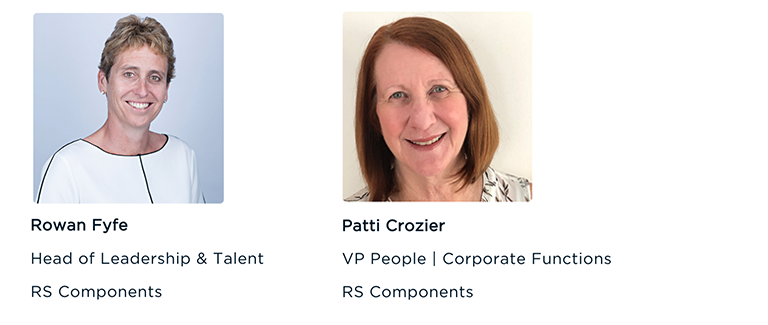
 |
To start, could you tell us a little about the kind of challenges a global organization like RS Components faces when it comes to post-COVID reboarding/reintegration?
|
Rowan: Well, with a global network of offices and distribution centers, “challenges” is certainly the right word!
Obviously COVID-19 has worked its way around the world, with every country experiencing different phases of the pandemic at different times. So we’ve really focused on learning from our colleagues in Asia-Pacific, as they’re ahead of us in their lockdown / return-to-work journey.
As other countries work through this cycle, we’ve considered the unique situation of that country, and combined it with our learnings from APAC, to ensure our reintegration approach is the best experience possible for our employees.
Patti: Exactly right Rowan! Our APAC locations provided good observations and recommendations that we’ve been able to build upon.
One additional challenge is that we’ve had several distribution centers around the globe that remained open as our business provides essential services/products to the food and healthcare industries in our markets. While no reintegration efforts are required for them, it’s been important to address their concerns and needs as they continue to work on-site during the pandemic.
 |
How are you responding to these challenges?
|
P: We said from the start – and in fact, our CEO emphasized this recently on a leadership call – that the safety and wellbeing of our employees is our first priority. And it really has been.
We have a Crisis Management team that took the lead on identifying what challenges we were facing in each country when the pandemic began spreading.
In each location, we started from the position that if the job allowed an employee to work from home, that’s what we expected them to do.
We are gradually reopening offices and only bringing back to the office those employees who have expressed concerns about their wellbeing in a continued remote set-up. Even then, we are being very clear about the fact the office “life” will look and feel very different than it did pre-lockdown.
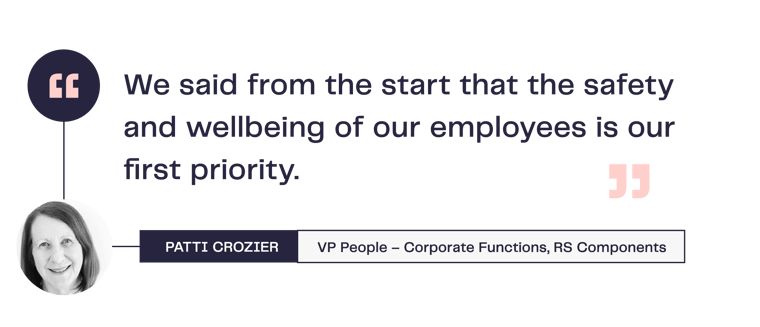
 |
In the reopening offices, what sort of guidelines have you put in place to safeguard employees’ health?
|
P: Those offices in countries that have progressed along the pandemic curve a little faster are allowing employees back in those offices on a split shift schedule – one week in/one week out.
In our DCs, we are taking great care to schedule shifts so employees don’t cross-contaminate each other, ensuring social distancing is adhered to and if it can’t be, masks must be worn, which we provide to our employees. Also, if someone needs to self-isolate or shield, we support them to do so.
We’ve also supported our employees who have care-giver responsibilities, either for children or other family members. Where they can work from home, again, they are encouraged to do so and managers are flexible with the employees' work hours.
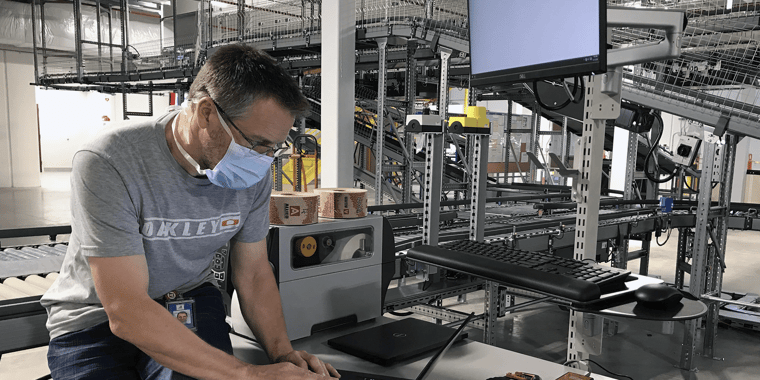
Chris Hewerdine - Director of Operational Improvement, Electrocomponents PLC
 |
Has there been any specific focus on the mental health aspect of returning to work?
|
R: Our People Teams and Health & Safety are working closely together as both the physical and psychological aspects of safety are important to us.
We’re very much in dialogue with employees - understanding their experiences and their perspectives on what a successful reintegration to the workplace will look like for them. We’re asking them questions through surveys about how they feel, and how they would like the experience to be to inform our approach, of course taking into consideration the legislation in each country.
 |
That’s fantastic to hear that you’re so connected to every aspect of your employees' wellbeing.
What has the response been like from your teams?
|
P: We’ve heard a lot of appreciation for how the company has handled our reaction to the pandemic.
From immediately setting up people to work from home in a very short timeframe (heavy kudos to our technology teams for making that happen) to easing back into the office.
The overall reinforcement and leadership from the top around continuing to work from home if you can has been well received. And we’ve had positive feedback regarding the clear and concise communications about what to expect when you return to an office, incorporating all the H&S guidelines for social distancing, use of break rooms, frequency of cleaning, etc.
 |
What are some of the success stories you’ve seen?
|
P: In a workforce of 6000 employees, we’ve only had 37 positive cases reported to us, and 27 of those are fully recovered. We’ve explained our preparation efforts to ready an office for reopening; in APAC, pictures were sent of the office being deep cleaned so the employees could see for themselves some of the precautions.
During the pandemic, we set up two SharePoint sites – one for managers and one for employees – to go to for answers and information.
A Keep Connected site was also established offering tips/techniques on how to address wellbeing, working at home with children “underfoot”. This was an external site that all employees could access whether at work or not, and we encouraged it to be shared with suppliers, customers, friends and family to ensure everyone was able to make use of the fantastic free resources.
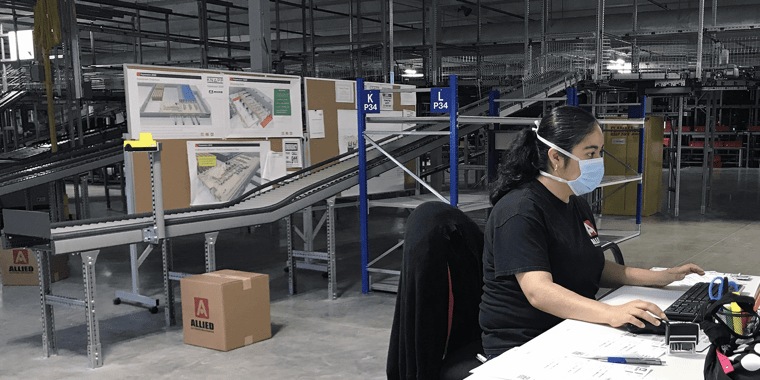
Celia Ortiz - Operations, Electrocomponents PLC
 |
I love hearing about all of these fantastic information portals, that’s something that we advocated for in our reboarding and remote onboarding guides, it makes life so much easier when you have access to centralized information.
How have you encouraged collaboration and connection between general staff and managers during this time?
|
P: We recently sent a survey out to over 3100 employees who had continued to work from home. The focus on the survey was to start setting the stage that as we start returning to the offices, it will not be the same. We also used it to tease out what concerns employees have about returning to the workplace, as well as if employees would like to continue to work remotely, what would a new way of working look like (what’s critical to them), and what has been the best part about working life during the pandemic.
We had a 70% response rate, with high marks indicating employees felt their productivity had improved, a strong preference to work from home 3 or 4 days a week, and over 6,900 comments to read through.
R: We’re also working closely with Line Managers and have started to help them think about the experience that they’ll need to deliver for their teams when they return to the workplace. We had over 100 people managers on a Live session recently to hear from Managers who have returned from furlough, our mental health champion, and leaders from APAC sharing what managers will need to prepare for their teams.
 |
Why do you think a ‘formal’ reintegration process is so important?
|
P: It’s important for our employees to understand the work environment is going to be different.
Long gone – at least for a while – will be the casual hallway conversations, gathering around the coffee machine, face-to-face meetings, basically the social interactions that many people crave. We have to help managers and employees understand this and connect while staying safe. It’s almost like a new employee orientation, which is quite different than what would have been a normal orientation just 3 months ago.
Rowan has a great quote that sums it up perfectly...
R: Yes! I read an article that described the feeling of returning from furlough as: “if you've been traveling for a year or two and then return home expecting to find everything just as it was, except it isn't and everything has changed” - it's that feeling.
This has been possibly a life-changing time for people and many things may have changed for them. To me formal doesn’t mean it’s a big organizational process, it means that managers have thought through how they can best support an employee getting back up to speed in their role, or in how they feel about where they work and reconnecting them with what they love about it.
You want to bring everyone back to the same “starting point”. That where tools from providers such as Talmundo that enable centralized access to information and checklists are so helpful.
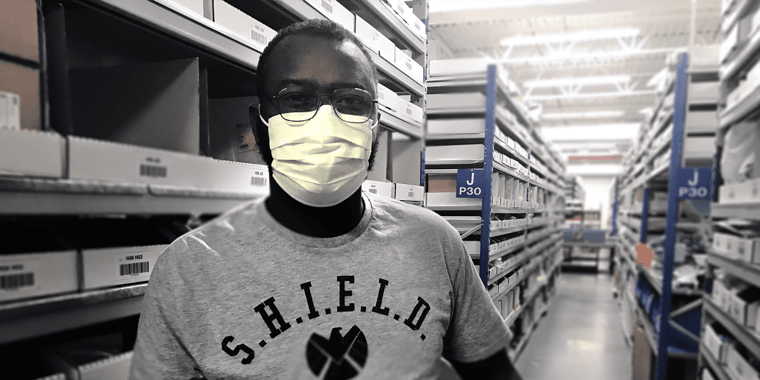
Bianco Harris - Operations, RS Electrocomponents PLC
 |
We’ve seen that throughout the lockdown there has been an increased focus on personal career development.
I understand that RS Components have developed a Talent Marketplace initiative in response to this - could you tell us more about the project?
|
R: Sure! The Talent Marketplace kicked off in May as we had several projects needing additional resources. We wanted to give everyone the opportunity to try something new if they had the passion and commitment to do it - there’s no better time to learn than in a crisis!
The concept is still in its early days, but basically, we have used our internal careers site to advertise short term project and assignment opportunities and match internal talent who apply to them. The assignments are done in addition to day jobs and rely on an Expectation Agreement between the employee, their Line Manager, and the Assignment Manager so that everyone is clear about their role in making this development opportunity work.
 |
That’s a wonderful project that I imagine many organizations would be eager to emulate. A perfect balance of resource optimization and career development.
OK, so final question. What advice would you give to other organizations looking to implement a successful reintegration journey?
|
P: Listen, ask questions, listen some more. Set the expectation that things will be different – strong communications to everyone.
Like so many companies, we are working our way through this. We won’t have it 100% perfect but we are willing to be fluid and flexible. We’ll try it – if it doesn’t work, we know we can flex and try something else.
R: Think from the different types of employees’ perspectives - their needs and wants - we found the Talmundo personas very helpful for this!
 |
The Takeaway |
RS Components have gone out of their way to loop their entire employee base into the reintegration process and have prioritized experience and employee wellbeing above all.
I think most businesses would agree that this is best practice, but so much of the time it falls over in the execution. RS have backed up this strategy with clear, transparent communications - which has allowed them to ‘walk the walk’ and make good on their commitments to their employees.
So when you’re developing your reboarding process, take a page from their book and aim for a people-centric approach that puts employees first.
Want to unleash an effective reboarding plan that puts your people first?
Try our in-depth reboarding players’ guide today for a deep-dive on the different attitudes and personalities you’re likely to encounter during reintegration!









